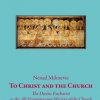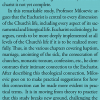A work for quartet with film
- Aleksandra Vrebalov, composer
- Bill Morrison, filmmaker
- David Harrington and Drew Cameron, creative consultants
- Janet Cowperthwaite, producer
- Kronos Performing Arts Association, production management
About Beyond Zero: 1914–1918
"Unlike official histories, that have often romanticized and glorified the war, artists have typically been the keepers of sanity, showing its brutality, destruction, and ugliness. For many, across history, creating art in those circumstances served as a survival mechanism.
While working on Beyond Zero: 1914–1918, I was inspired by anti-war writings, music, and art created during and immediately after World War I, including, for example, the writings of Wilfred Owen and Siegfried Sassoon, the music of Satie and Debussy, and the Dada movement. The piece draws from their disillusionment about heroism and patriotism, summed up in Owen’s line from Dulce et Decorum, that to die for one’s country is the old lie.
.Throughout the piece, there are several documentary recordings from different wars – from the horrific “Loyalty Speech” of James Watson Gerard who served as a U.S. Ambassador to Germany until 1917, to military commands of Serbian and Bosnian troupes during the conflicts that led to the brutal falling apart of Yugoslavia in 1990s, to the chilling sound of air-raid sirens during the bombing of London in World War II.
My intention was to juxtapose these historical accounts of war with the finest expressions of spirit and creativity occurring at the same time – therefore Béla Bartók’s own playing of his Piano Suite written in 1916, and Huelsenbeck’s reading of his Chorus Sanctus, also written in 1916. A girl calling her cats is a symbolic reminder of suffering of women and children, and of longing for lost safety and domesticity. Beyond Zero: 1914–1918 ends with fragments of a dark Byzantine hymn Eternal Memory to the Virtuous, chanted by the monks from the Kovilj monastery in Serbia, in remembrance to all who lost their lives in the Great War and every war since then.”
– Aleksandra Vrebalov
“The film portion of Beyond Zero: 1914–1918 is comprised of films that have never been seen by modern audiences. I searched archives for rare 35mm nitrate films shot during the Great War, and made new brand new HD scans from the originals. In many cases this is the last expression of these films – some original copies were determined to not be worth preserving beyond this transfer to digital media.
What we are left with is a glimpse of a war fought in fields, in trenches, and in the air. Most of the footage shows some emulsion deterioration – the by-product of a history stored on an unstable base for 100 years. Through a veil of physical degradation and original film dyes, we see training exercises, parades, and troop movement. Some of the battle footage was re-enacted for the camera, and some depicts actual live rounds. All of it was shot on film at the time of the conflict.
We see a record of a war as a series of documents passed along to us like a message in a bottle. None is more powerful than the record of the film itself, made visible by its own deterioration. We are constantly reminded of its materiality: this film was out on these same fields with these soldiers 100 years ago, a collaborator, and a survivor. It is being seen now as a digital image for the first time.
If these are images that we, as viewers, were once intended to see, to convince us of the necessity and valor of war, they now read as images that have fought to remain on the screen. They are threatened on all sides by the unstable nitrate base they were recorded on, and the prism of nearly one hundred uninterrupted years of war, through which we now view them.”
– Bill Morrison
Source: Kronos Quartet





